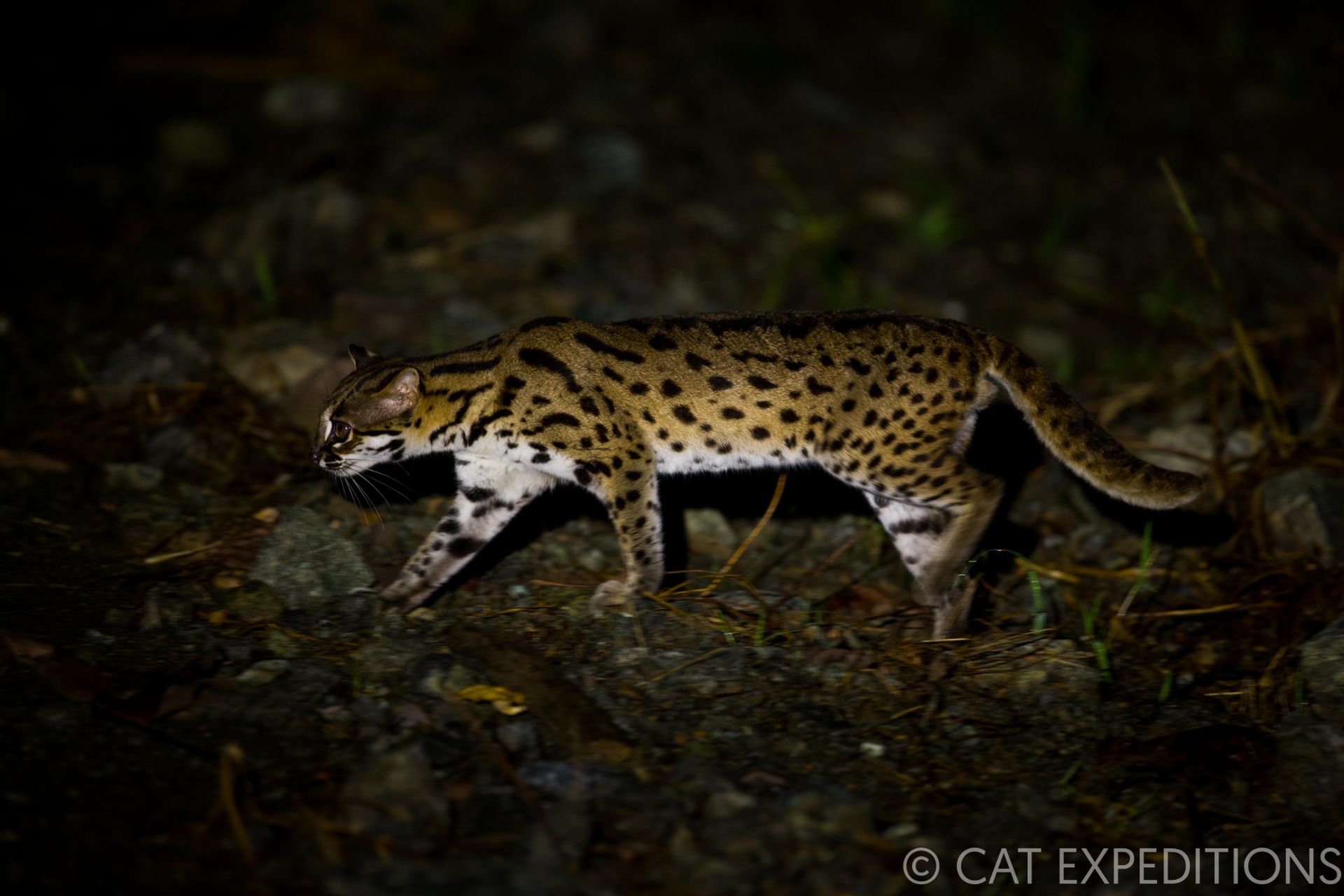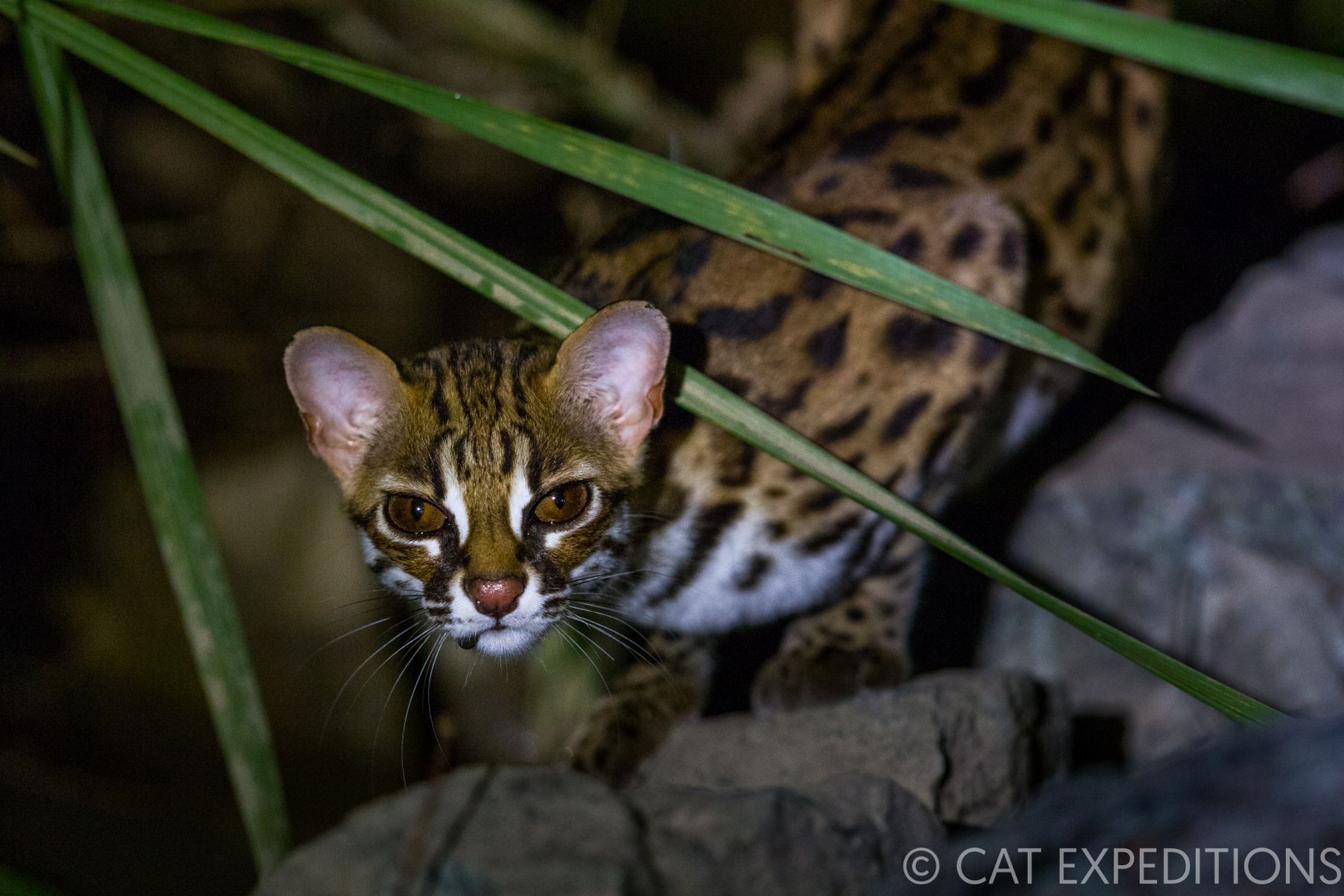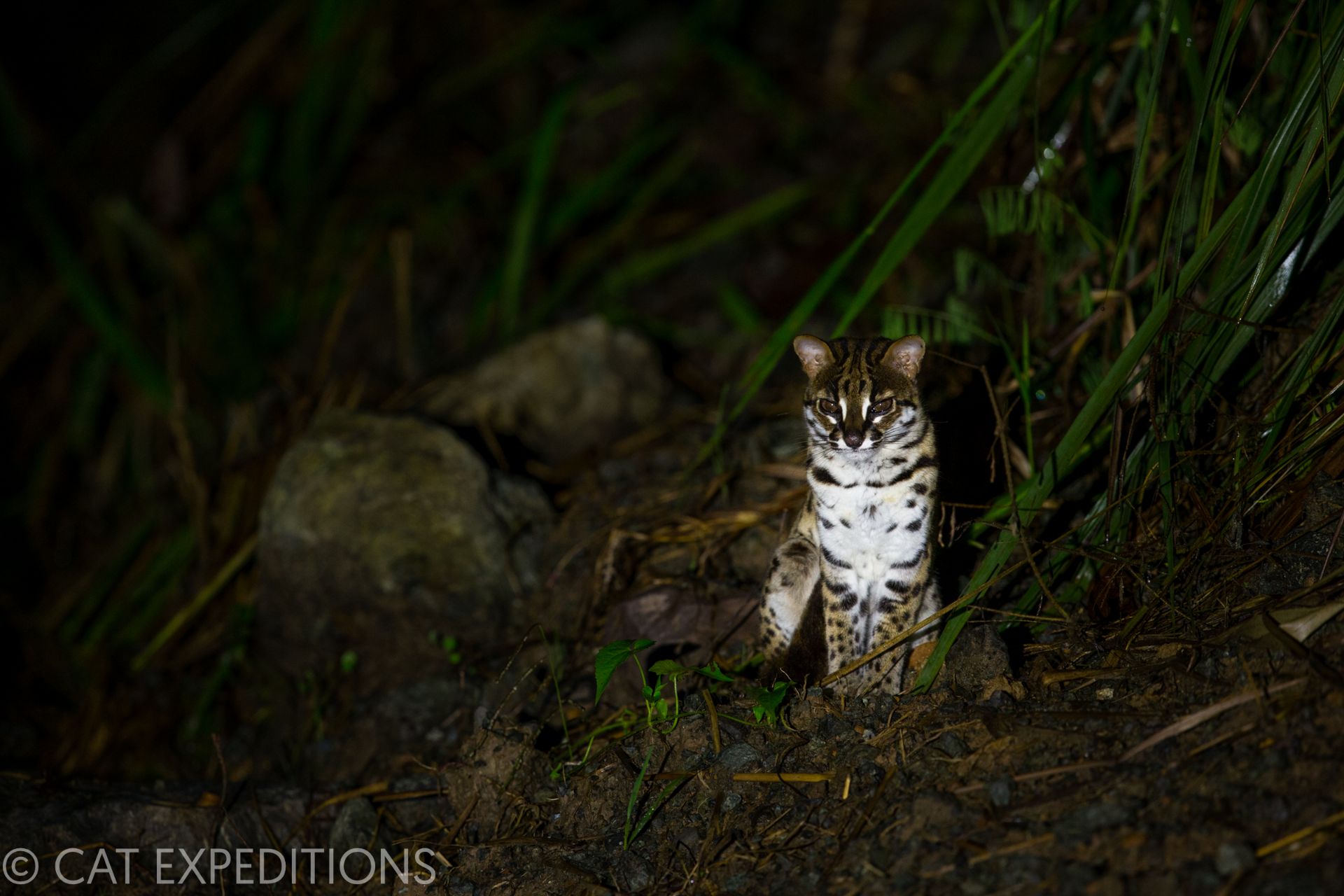Sunda Leopard Cat
SUNDA LEOPARD CAT (Prionailurus javanensis)
The Sunda leopard cat was recognized as its own species in 2017, being genetically different from the mainland leopard cat. It is found on many of the Indonesian islands and is one of the few cats that does well in human modified landscapes, including in oil palm plantations. Though capable of climbing trees, Sunda leopard cats spent most of their time on the ground.
Difficulty: Medium
Sunda Leopard Cat Tour Statistics
2 SUNDA LEOPARD
CAT TOUR RUN
26 AVG NUMBER OF CATS SEEN PER TOUR
5 MINUTES ON AVG
WITH EACH CAT
Sunda Leopard Cat Description
Sunda leopard cats are a small wild cat, generally a little bit smaller than domestic cats. Like its mainland relative, Sunda leopard cats have a slender body, with long legs and webbed feet. Its eyes are quite large, which help them see at night. Sunda leopard cats have black spots all over their body, tail, and legs. In Borneo, where we run the Cats of Borneo tour, the cats tend to be yellowish-orange in color. The ears are well rounded and are proportionally large compared to its head size. Sunda leopard cats weigh up to 4 kg (9 lbs), but generally weigh much less, averaging around 1.5 kg (3.3 lbs).
A male shows off the typical spotting we see on our cats of Borneo photo tour with large distinct black spots on its side.
Sunda Leopard Cat Distribution and Habitat
Sunda leopard cats are found in Borneo, Sumatra, and many of the Indonesian islands. Their natural habitat is lowland tropical rainforest, but also do well in human modified landscapes like oil palm plantations, As long as there is suitable cover for the cats to retreat into, they will occupy the habitat. During our Cats of Borneo photo tour we most often encounter the cats right along forestry roads since the will look for prey in the water puddles that collect along the roads. We have even been lucky enough to find one female leopard cat sleeping in a tree, ten meters off the ground.
Sunda leopard cats live in lowland tropical rainforest like this found in Borneo
Sunda Leopard Cat Feeding Biology
Sunda leopard cats look for their prey primarily at night. They will predate small rodents, frogs, reptiles, birds, and even insects. In the oil palm plantations they primary feed on rats. During our previous tour, we saw Sunda leopard cats feed on a frog and a large spider. Most of their activity came soon after rains, as that brought out the frogs onto the roads. They will hunt by both sight and sound, and will climb trees and swim to reach their quarry.
Even moths are on the menu for Sunda leopard cats, especially if they are as large as this hand-sized saturniid moth.
Sunda Leopard Cat Social Organization
Like most other cats, Sunda leopard cats are solitary and territorial. Male ranges encompass at least one female’s range and are larger than those of females. Sunda leopard cats scent mark and scrape to indicate their territorial boundaries, like most cats. It has happened on multiple occasions during our night drives that we saw two Sunda leopard cats within seconds of each other. Undoubtedly the cats knew of each other’s presence and did not mind. It also shows that leopard cat densities can be quite high in the right habitat.
Luckily some sunda leopard cats are as curious as one expects cats to be and comes and check us out during our tour.
Sunda Leopard Cat Reproduction
Very little is known about the reproductive biology of Sunda leopard cats and most of the information we do know comes from animals in captivity. It appears that the cats give birth at any time of year, usually to a litter of two or three kittens. There have been cases of four kittens being born as well. Sunda leopard cats are probably independent of their mother around 8-10 months. How old they live in the wild is not known.
Interestingly enough, almost all the Sunda leopard cats we see during our tours are males. Where are the females?





